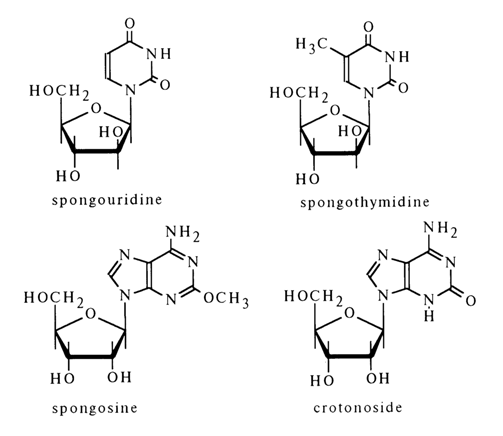![]() Go to frame view (Recommended only for
screen resolution 1024x768)
Go to frame view (Recommended only for
screen resolution 1024x768)
1.11 Other Nucleosides
In addition to the nucleosides produced by microorganisms, a number of free nucleosides have been discovered in plant and animal tissues, whose role in biochemical processes is yet to be elucidated. The structure of some of them is given below:

Spongouridine, spongothymidine and spongosine were extracted from the sponges Cryptotethya crypta directly with the aid of acetone. The structure of these compounds was established using standard procedures (described above) and corroborated by synthesis. Crotonoside was isolated from beans. When subjected to acid hydrolysis, it yields isoguanine and D-ribose, while its deamination yields xanthosine also obtained when guanosine is exposed to nitrous acid. This is why the structure Of 9-P-D-ribofuranosyl-2-hydroxy-6-aminopurine was ascribed to crotonoside and this was subsequently corroborated by synthesis.